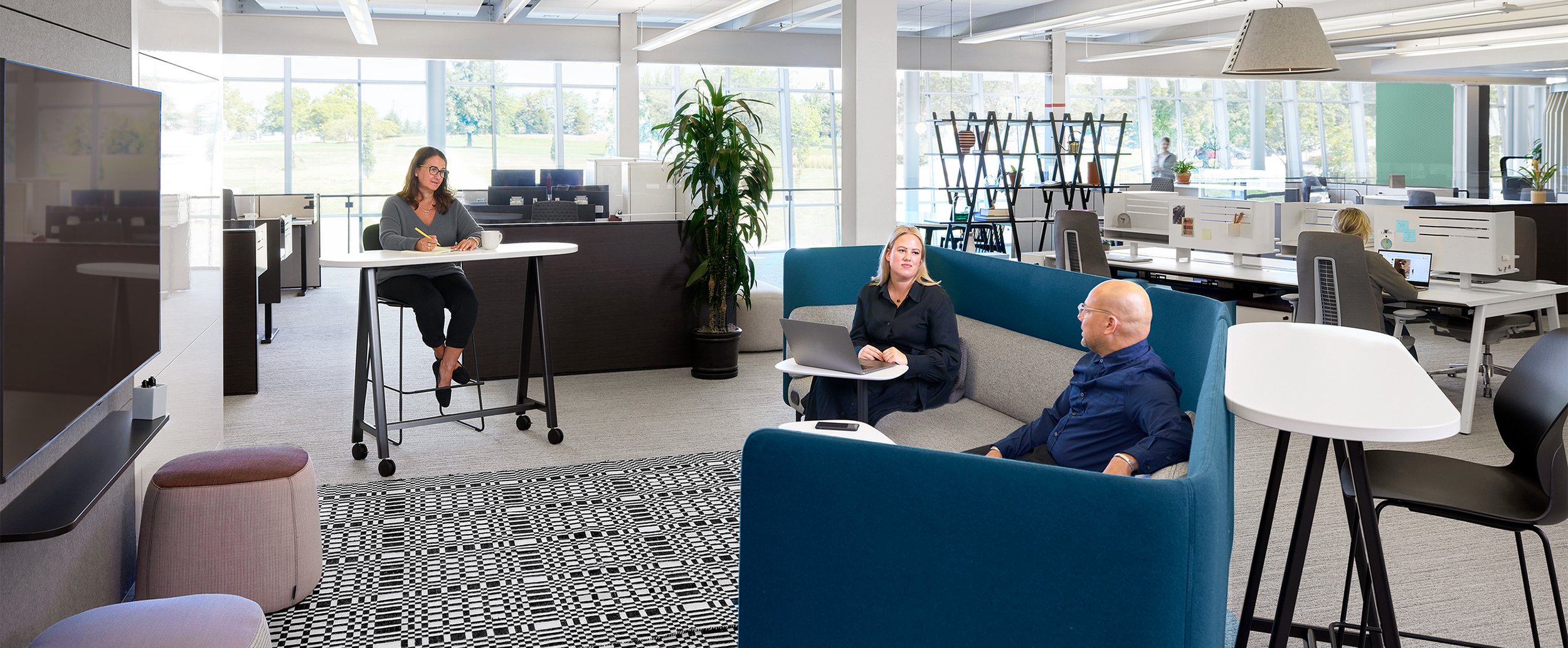Office Collaboration for Effective Teaming
Most innovative companies are working toward satisfying their need to support both in-person and virtual work. They’ve determined their hybrid and remote work policies, and it is safe to say there is no going back to the way things were. But, questions remain for both employees and employers—particularly, “What does the future office look like?” and “How do we create a better hybrid work experience?”
Allison English represents Leesman, conducting research to understand what the future of work looks like, measuring workplace effectiveness and employee experience, and determining how to create better corporate workplaces and other places to work. According to English, who shared findings from a global hybrid work study that included participants from over 90 countries, “It is now more important than ever to define the workplace ‘why.’”
Globally, many organizational leaders are now requiring employees to come to the office 3 or 4 days per week. But, this mandate is often met with the question from their employees, “Why should I come back to the office?” Leaders need to provide a better response than a simple “We want you back,” and offer effecting teaming solutions, so employees value their time in the office. Employees are demanding more flexibility and choice, and organizations need to determine how the office will fit into their hybrid work strategies.
Examining Both Organization and Employee Needs
Now that work from home has a permanent place in the Work from Anywhere ecosystem, organizations need to define how their employees will balance their work and interactions in this ecosystem. For most employees, home has become a convenient place to support individual focus work, reading, scheduled calls, and virtual meetings. The office, however, is starting to be viewed as the epicenter for team collaboration, creativity, and culture, with easy access to physical materials and resources. Newly emerging third places can provide flexible options for temporary focus work or touchdown activities in different settings, away from distractions that may be in the office or home.
Focusing on Needs at the Office
Recent history has proven employees can use many kinds of technology to collaborate and work remotely. Since the office isn’t the only “place” where people can work on a project together, it needs to be more than just a physical space where employees are required to go a few days a week. Organizations need to reimagine how the office can be a desirable work location that supports team flexibility and choice for the activities they do. Designing an office that serves as a hub for connection, collaboration, and culture creates a place people want to go, providing an answer to employees’ question of “Why should I return?”
Organizations looking to promote truly effective teaming, creativity, and innovation should consider how they may currently be creating roadblocks and what they can do to build and support high-performing teams. If the expectation is that people need to be in the office 3-4 days a week, the office needs to encourage the meaningful face-to-face interactions that lead to effective teaming through both space design and culture.
To begin, organizations should examine workplace design considerations to help teams achieve this ad hoc collaboration. One such consideration is geographical boundaries, which revolve around the “where” and “when” employees get together in teams to solve problems, think creatively, or innovate. Answering these questions are relevant because many teams now find themselves with members dispersed between the office, home, and third places.
The culture and collaboration modes of the team should also be examined. Does the team share information during scheduled meetings and formal presentations, or they require more informal spaces for idea generation, brainstorming, and strategic thinking? Once these specific work needs are understood, physical workspaces can be designed specifically to provide flexibility and immediate access to team members to create an environment where high-performing teams can thrive.
By providing office spaces designed for each team’s unique needs, employers are better prepared to educate employees and show them why it is a beneficial experience—for both them and the organization—to return to the office more frequently.


